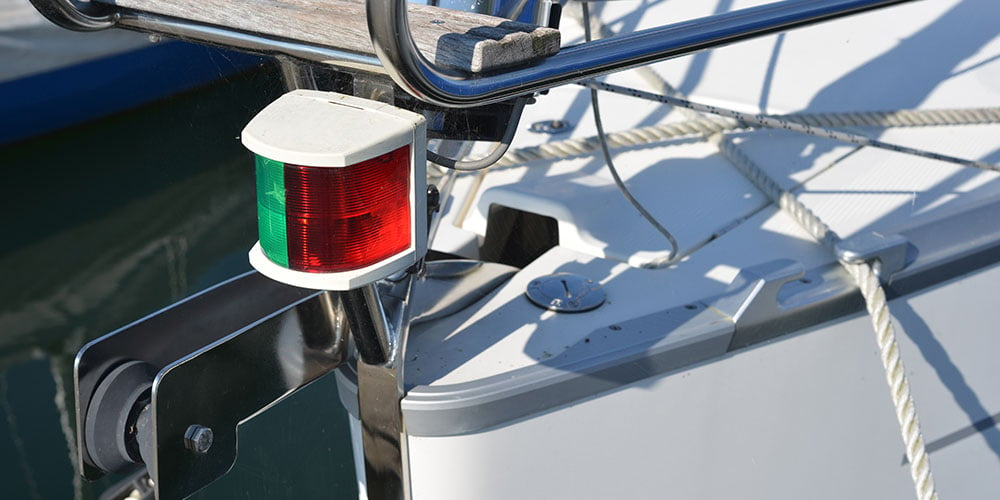
Recreational boats operating at night are required to display navigation lights between sunset and sunrise. Changes to the Inland Navigation Rules make them nearly identical to the International Rules, so we will describe the International Rules to simplify the choices.
- Boat Navigation Light Types
- Basic Rules and Definitions
- Navigation Lights Requirements Based on Vessel Size & Type
- Common Navigation Light Installation Mistakes
- Replacing Damaged Lights
- Portable Lights for Dinghies, Canoes and Kayaks
Boat Naviagtion Light Types
Sidelights
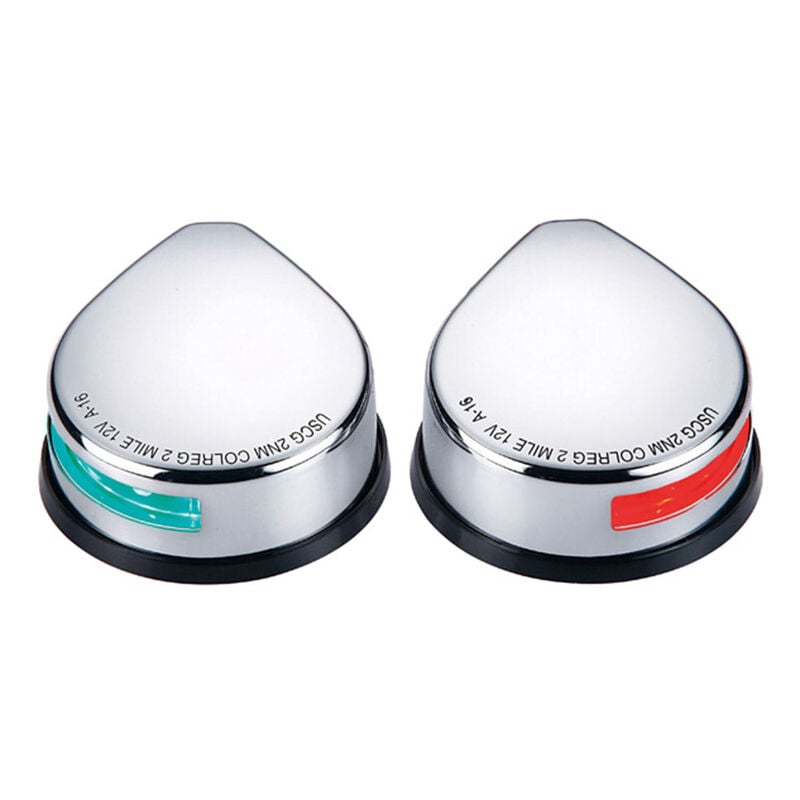
Port sidelights are red, starboard sidelights are green and both shine from dead ahead to 112.5° aft on either side.
Stern Lights
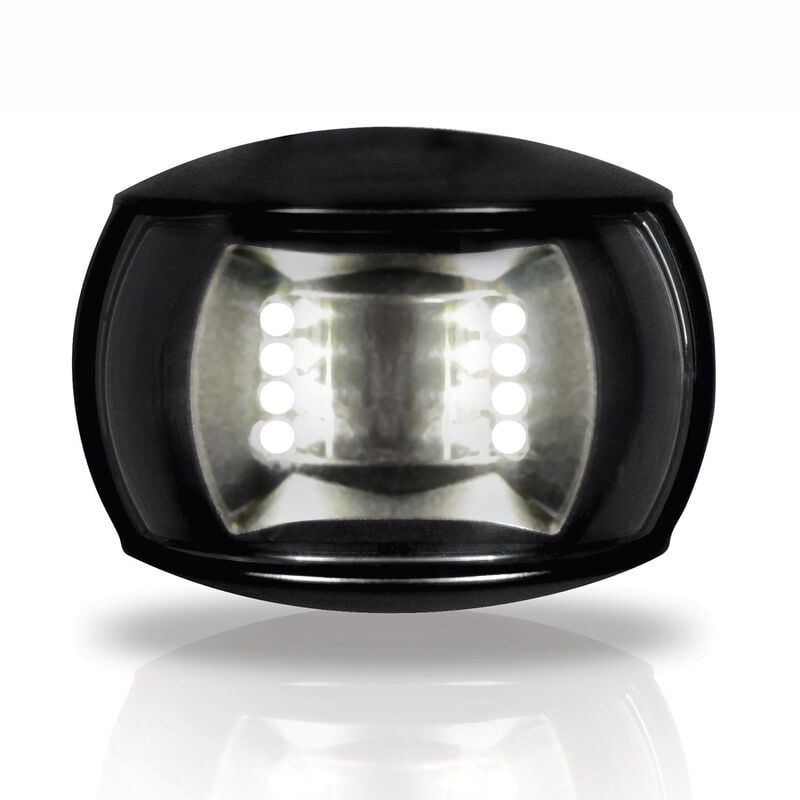
Stern lights are white and shine aft and 67.5° forward on each side. (Thus, the sidelights and stern light create a full circle of light.)
All-Round Lights
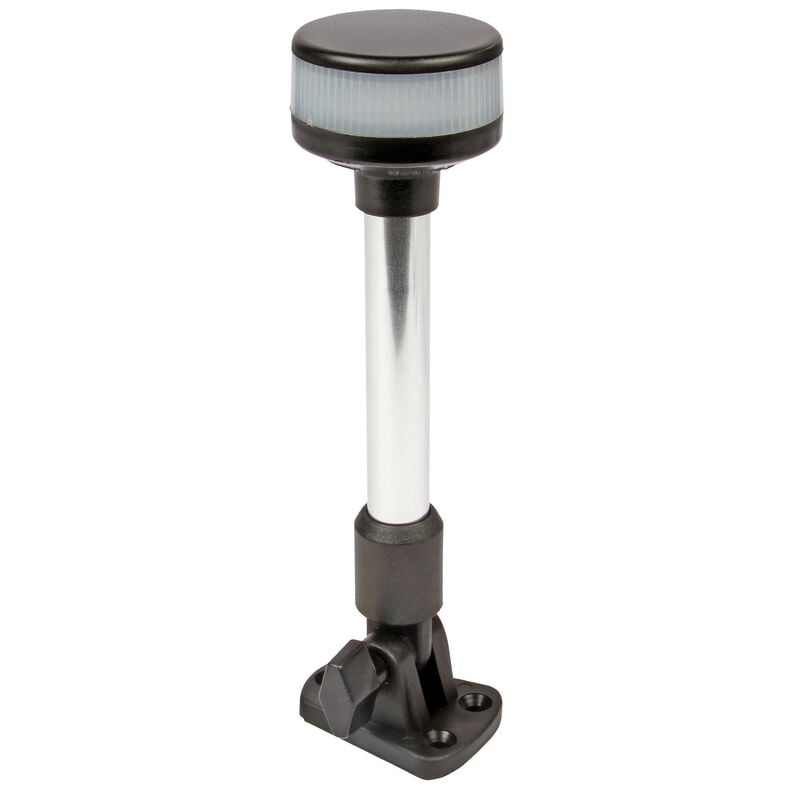
All-round lights are white and shine through 360°.
Masthead Lights
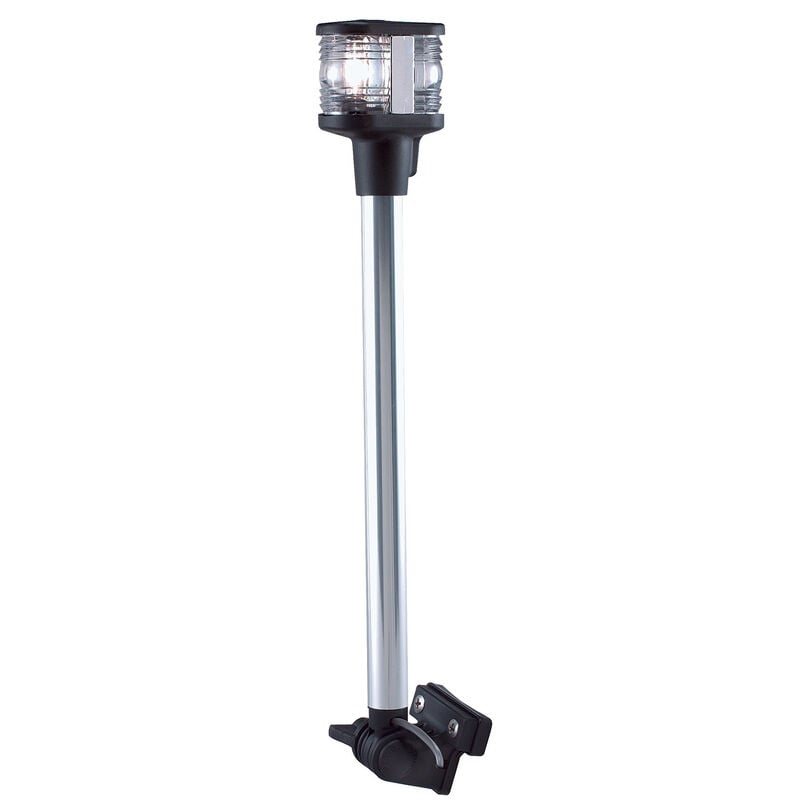
Masthead lights are white and shine from 112.5° on the port side through dead ahead to 112.5° on the starboard side for a total of 225° forward. They must be above the sidelights.
Basic Boat Navigation Light Rules
- Recreational boats operating at night are required to display lights between sunset and sunrise
- The lights you're required to have are based on the length and type of your boat
- Sailboats under power are considered powerboats.
- Sailboats with sails up during the day, but are also under power, must fly a black "steaming cone," with its point downward, where it can be seen. When under power they must follow the rules of the road for powerboats.
Chuck Hawley discusses options for navigation lights on your boat and what lights you can combine.
Navigation Lights Requirements Based on Vessel Size & Type
Navigation light requirements vary depending on a few key factors
- Boat length
- Boat type
- Boat operation conditions
The graphic below gives a visual overview of boat light rules and we'll walk through specific light regulations as well.
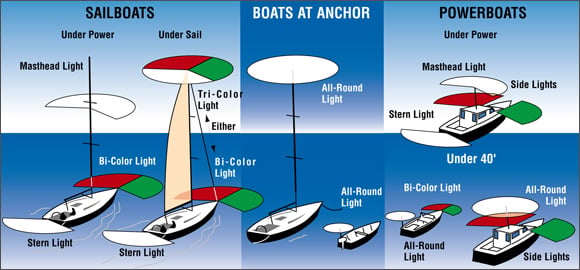
Powerboats and Sailboats When Under Power
The basic rule is that side lights, a masthead light and a stern light are required. Permissible variations to this rule appear below. NOTE: Sailboats operating under engine power are considered power-driven and must follow the “Under Power” rules.
- Powerboats that are less than 12m (39.4') may substitute a single all-round light for separate stern and masthead lights.
- Powerboats and sailboats under power that are less than 20m (65.7') can substitute a single bi-color light for sidelights.
Sailboats When Under Sail
The basic rule is that sidelights and a stern light are required. Permissible variations to this rule appear below.
- Sailboats less than 20m (65.7') can substitute a tricolor light for separate sidelights and stern light—or a bi-color light and a stern light may be substituted.
- Sailboats less than 7m (23') shall, if practicable, exhibit lights as explained above. An acceptable substitute is to keep ready at hand an electric torch or lighted lantern (flashlight) that shows a white light that shall be exhibited in sufficient time to prevent collision.
- During the day, sailboats that are under power with their sails hoisted are required to display a motoring cone with its apex pointed down.
Oar-Driven and Paddled Vessels (Rowboats, Kayaks, Canoes)
- Rowed or paddled vessels may exhibit the lights for a sailboat. An acceptable substitute is to keep ready at hand an electric torch or lighted lantern (flashlight) that shows a white light that shall be exhibited in sufficient time to prevent collision.
Vessels at Anchor
- When anchored at night outside a designated anchorage, an all-round light visible for at least 2nm is required.
- During the day, when anchored outside a designated anchorage, a black anchor ball must be displayed.
Minimum Visibility Range
- Boats less than 12m (39.4'), sidelights must be visible for at least 1nm. All other lights must be visible for at least 2nm.
- Boats less than 20m (65.7'), a masthead light must be visible for 3nm. All other lights must be visible for 2nm.
- Boat over 20m (65.7') and less than 50m (164') must display a masthead light visible for 5nm. All other lights must be visible for 2nm.
Other Requirements—For Boats Greater Than 20m (65.7')
- A copy of the Navigation Rules and Regulations must be kept on board at all times. See our selection of books.
Common Navigation Light Installation Mistakes
If your next weekend project is repairing broken navigation lights or upgrading to LEDs, watch this video first. Chuck Hawley points out some common mistakes boat owners make when installing navigation lights that will make your lights less visible and in some cases not compliant with USCG regulations.
Replacing Damaged Lights
Pole lights are often damaged if they are improperly used as a handle when getting in the boat. Chuck Hawley discusses some options for replacement with mounting options to fit any boat. We also carry a variety of navigation lights accessories including replacement lenses, mounts and clips for many popular light manufacturers.
Portable Navigation Lights for Dinghies, Canoes and Kayaks
While smaller boats are allowed to use a flashlight or spotlight for collision avoidance, an inexpensive, portable bi-color light will keep you safer on the water. Chuck Hawley discusses some options.
Navigation Lights FAQ:
What are navigation lights, and when are they required?
Navigation lights are required for boats operating at night, between sunset and sunrise, to ensure visibility and avoid collisions.
What types of navigation lights are there?
Common types include sidelights (red and green), stern lights (white), masthead lights, and all-round lights. Each has specific visibility and placement requirements.
What lights are required for powerboats?
Powerboats need sidelights, a masthead light, and a stern light. Boats under 12m (39.4 feet) can substitute a single all-round light for separate masthead and stern lights.
What lights are required for sailboats under sail?
Sailboats under sail need sidelights and a stern light. Sailboats under 20m can use a tricolor light or a combination of a bi-color light and stern light.
What is the difference between international and inland navigation rules?
The rules are now almost identical, with both requiring navigation lights to be displayed from sunset to sunrise, but always confirm with local regulations.
Do I need special lights if my sailboat is also under power?
Yes, sailboats under power are considered powerboats and must display the same lights as powerboats, including a masthead light. You also need to fly a black "steaming cone" during the day.
What lights should I use for small vessels like kayaks, canoes, or dinghies?
Small, non-motorized vessels may use a flashlight or lantern, but a portable bi-color light is recommended for better visibility.
What are common mistakes when installing navigation lights?
Some mistakes include improper placement that reduces visibility, installing lights that don’t meet visibility range requirements, and incorrect wiring.
How should I replace damaged navigation lights?
Replace damaged lights with proper fittings and ensure they meet USCG regulations. Options include pole lights or LED upgrades for better durability and visibility.
Are there specific requirements for boats at anchor?
Yes, when anchored at night outside a designated anchorage, you must display an all-round white light. During the day, display a black anchor ball.
We're Here to Help!
Online and in over 230 stores, West Marine offers everything you need for safe and enjoyable boating. Whether you're upgrading to LED lights, replacing damaged equipment, or outfitting a small vessel, our experts can help you find the perfect navigation lighting solutions. Let us assist you in making your time on the water worry-free! Click on our handy store locator to find a West Marine store near you.
Related








